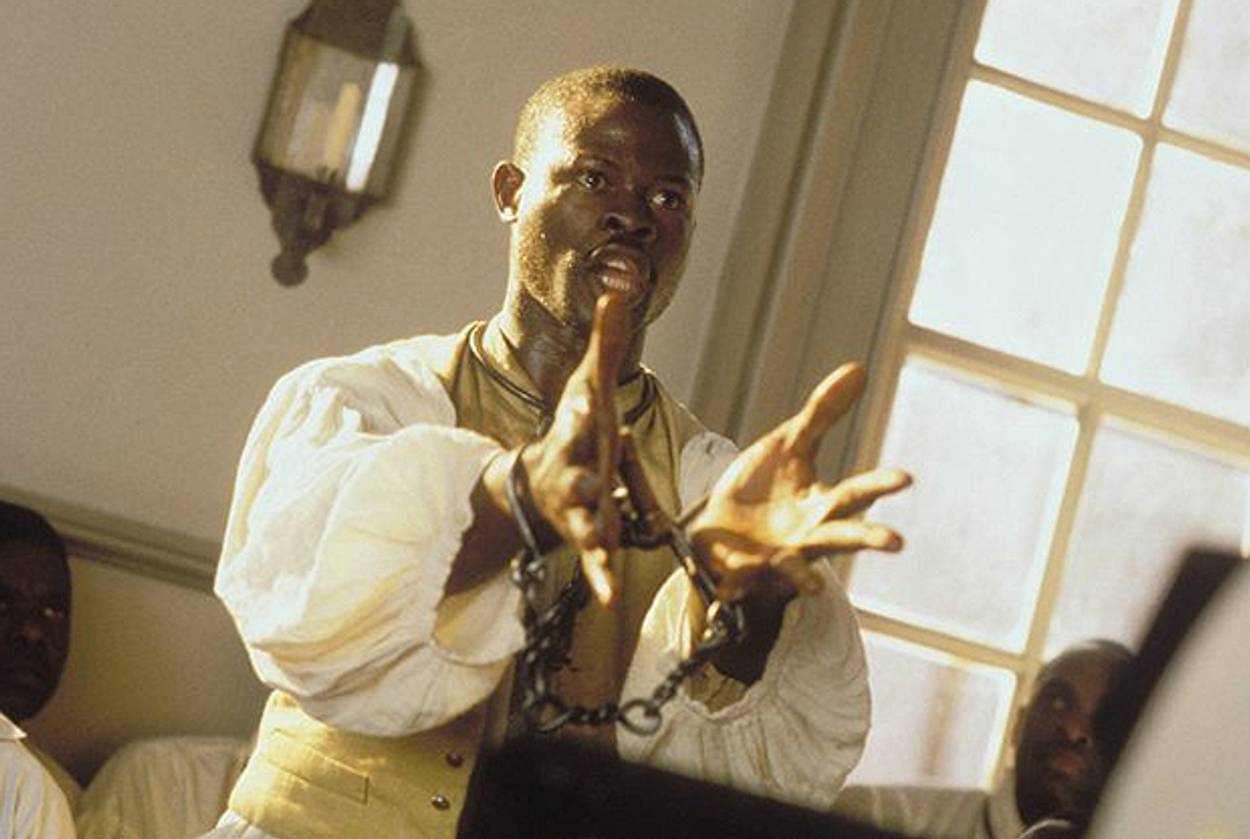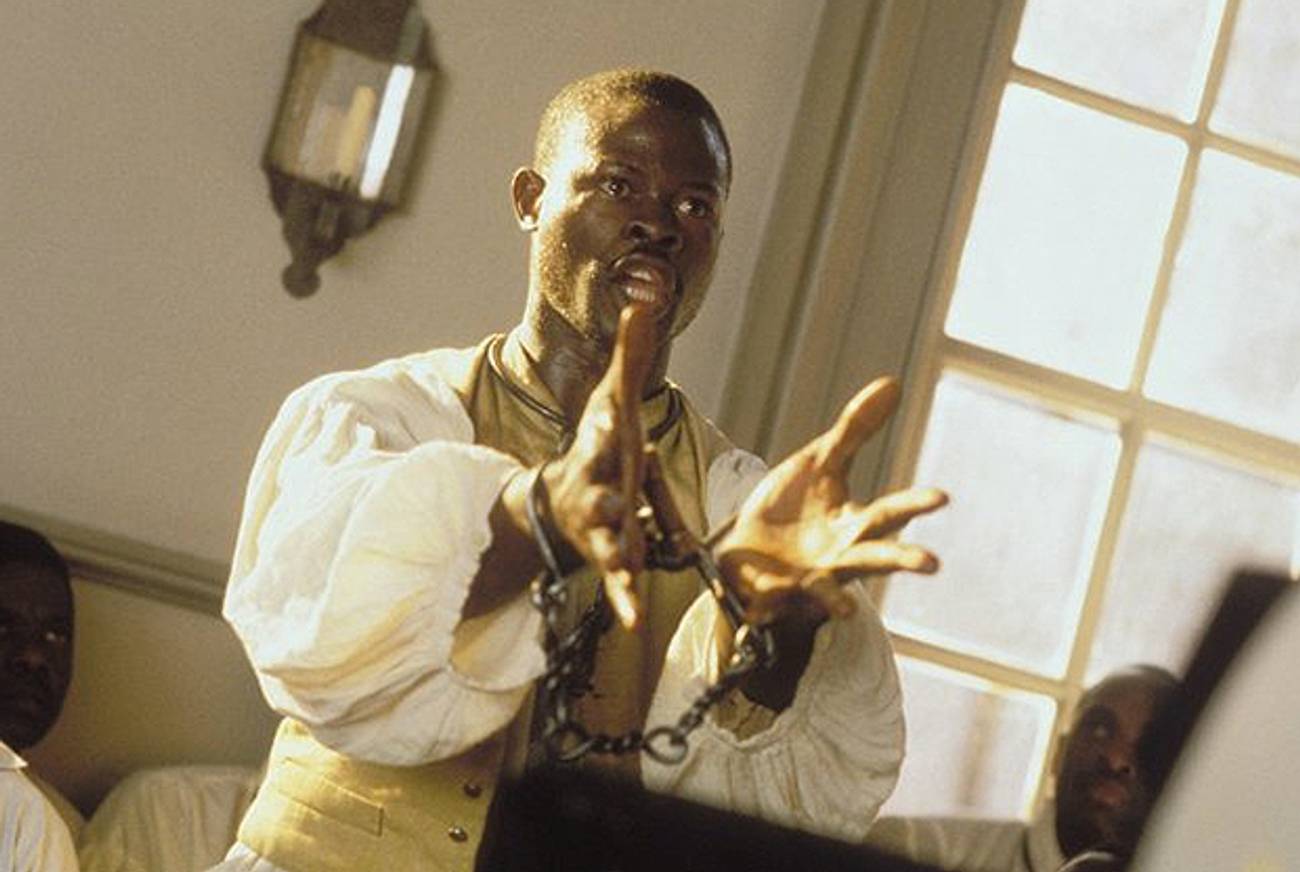‘Amistad’ and Spielberg’s West African Moses
The 1997 film looks back to the biblical Exodus and ahead to Abraham Lincoln




Spielberg movies often come in twos. There are the conventional sequels, of course, but if there’s a subject that really engages him, Spielberg has a habit of circling back around to it with new ideas, new collaborators, and new technological tools.
The late critic Stanley Kauffmann noted that, “in a sense, E.T. begins where Close Encounters ends.” Spielberg himself has called Jurassic Park a kind of “Jaws on land.”
And in Amistad, we see a first reckoning with slavery that Spielberg returned to again in a fuller more final form with Lincoln 15 years later.
The film opens in the cargo hold of a Spanish schooner, La Amistad, with its hero, whom we later come to know by his slave name, Cinqué, in chains. Using a nail that he’s painstakingly pulled from the ship’s woodwork, he picks a lock that frees him from his fetters. The scene quickly announces the film’s central theme: the movement from bondage into freedom. Brainy and brawny, on a grueling voyage and hungry for home, Cinqué is an Odysseus, but he’s also a leader and freer of slaves: He is also a Moses.
After seizing control of the ship off the coast of Cuba, Cinqué and his fellow Mende tribesmen spare two of their erstwhile captors, Montez and Ruiz, in the hope that the two Spaniards will return them to Africa. Instead, the two navigate up the eastern seaboard until the ship is intercepted by a U.S. revenue cutter off of Long Island. The Mende end up in a kind of legal limbo.
Though the case became a landmark in the history of the abolitionist movement, it was concerned less with the legality of slavery in the South and more with the transatlantic slave trade. The case, United States v. The Amistad, which ultimately made its way to the Supreme Court, hinged on whether the Mende should be classified as the property of their Spanish captors or as free men.
Amistad has been criticized—by Spike Lee and others—for being a film about slavery where the slaves are silent and white people occupy center stage. The charge is not entirely fair. The lawyers, abolitionists, and politicians who people the film are—with a few notable exceptions—no more than bumbling fools. Cinqué (Djimon Hounsou), meanwhile, crackles with honor and energy. Anthony Hopkins was nominated for an Oscar for his performance as retired president John Quincy Adams—largely on the strength of the 10-minute speech he gives before the Supreme Court toward the film’s end. But the soliloquy is no match for the raw power of the scene in which Cinqué rises from the gallery of a Connecticut courtroom and—channeling Charlton Heston and Paul Robeson—demands that his latest captors, “Give us free!”
Amistad will be screened at New York’s Museum of Jewish Heritage on Wednesday, July 16, at 6:30 p.m. as part of the free summer-long series Close Encounters of the Spielberg Kind, which will continue every Wednesday through August 13.
Previous: The Theology of ‘Jurassic Park’
Related: Hollywood’s New Shoah
Gabriel Sanders is Tablet’s director of business development.